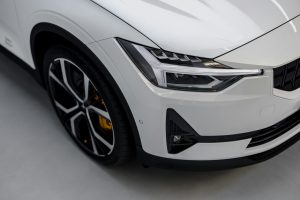The Evolution of Vehicle Safety Testing: How Crash Tests Have Changed
Over the past century, the development and advancement of crash testing has played a crucial role in improving vehicle safety standards. From the early days of rudimentary tests to the sophisticated procedures used today, crash tests have evolved significantly. As the demand for safer vehicles has increased, automakers and safety organizations have continuously pushed the boundaries of crash testing, resulting in improved vehicle design and safety features. In this article, we will explore the evolution of vehicle safety testing and how crash tests have changed over the years.
Early Days of Crash Testing
Crash testing in the early days of the automotive industry was a far cry from the highly sophisticated tests used today. In the 1920s, automakers first started conducting crude experiments to analyze the impact of collisions on vehicles. These initial tests involved rolling automobiles down hills and observing how they faired upon impact. While these tests were insufficient and lacked scientific rigor, they were a step in the right direction.
Introduction of the Barrier Test
In the 1930s, barrier tests were introduced, where vehicles were crashed into a concrete barrier at various speeds to gauge their crashworthiness. This helped automakers understand the impact of collisions on vehicles and make necessary design improvements. As technology advanced, these tests evolved to include dummies and instruments to measure impact forces and record data.
Development of the Crash Test Dummy
The development of the crash test dummy was a significant milestone in the evolution of vehicle safety testing. In the 1950s, physicist and Nobel Prize winner John Paul Stapp created a mechanical dummy, which allowed researchers to study the effects of crashes on the human body. This paved the way for more detailed and accurate tests, providing crucial data on the forces exerted on occupants during a collision.
Introduction of the Seatbelt
In the 1960s, seatbelts began to gain popularity, mainly due to the research conducted by the National Highway Traffic Safety Administration (NHTSA). In 1966, the NHTSA mandated the use of seatbelts in all passenger vehicles, and by the early 1970s, seatbelts became a standard safety feature in all vehicles sold in the United States.
Advancements in Technology
In the 1970s, crash testing became more organized and standardized, with the introduction of advanced technology such as high-speed cameras and computer modeling. This allowed for more precise measurements and analysis of crashes, resulting in improved safety standards and vehicle design. The 1970s also saw the introduction of airbags and improvements in vehicle structure, further enhancing occupant protection during a collision.
The Use of Crash Test Dummies in Rear-Impact Tests
In the 1980s, the NHTSA mandated automakers to conduct rear-impact crash tests to evaluate the safety of vehicles in low-speed collisions. This led to the development of the first crash test dummy for rear-impact tests, known as the Hybrid III dummy. This dummy was specifically designed to mimic the human neck and measure the forces exerted on the head and neck during a rear-impact collision.
Modern-Day Crash Testing
Today, crash testing has reached new heights, with the use of advanced technology and sophisticated procedures. Tests now include simulations of various types of crashes, such as frontal, side-impact, and rollover accidents. The dummies used in these tests are equipped with sensors to measure forces on different body parts, providing precise and detailed data for further improvements in vehicle safety.
Changing Crash Test Standards
As technology continues to advance, safety organizations and governments worldwide are continuously updating and improving crash test standards. In 2011, the NHTSA introduced the new small-overlap frontal crash test, which simulates a collision where the front corner of a vehicle strikes another vehicle or an object. This test has resulted in significant improvements in frontal crash safety, as automakers strive to achieve top ratings.
Conclusion
The evolution of vehicle safety testing over the last century has been nothing short of remarkable. From crude experiments to advanced simulations, crash tests have played a significant role in improving vehicle safety standards. The constant push for safer vehicles and advancements in technology have resulted in significant improvements and will continue to do so in the future. As vehicles become safer and more advanced, one thing is certain – crash testing will continue to play a critical role in keeping drivers and passengers safe on the road.







